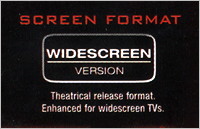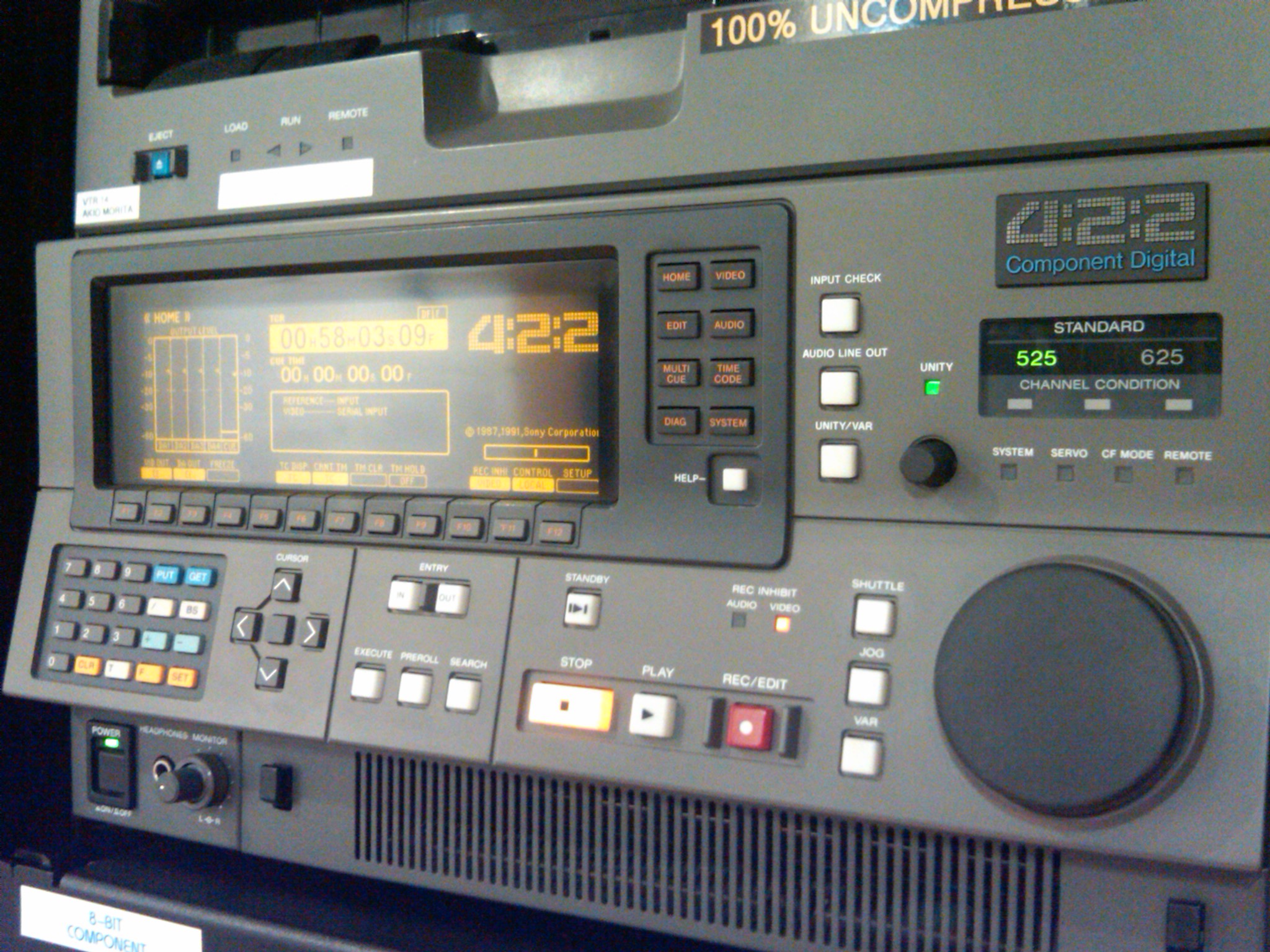|
Anamorphic Widescreen
Anamorphic widescreen (also called Full height anamorphic or FHA) is a process by which a comparatively wide widescreen image is horizontally compressed to fit into a storage medium (photographic film or MPEG-2 standard-definition frame, for example) with a narrower aspect ratio (image), aspect ratio, reducing the horizontal resolution of the image while keeping its full original vertical resolution. Compatible play-back equipment (a projector with modified lens, or a digital video player or set-top box) can then expand the horizontal dimension to show the original widescreen image. This is typically used to allow one to store widescreen images on a medium that was originally intended for a narrower ratio, while using as much of the frame – and therefore recording as much detail – as possible. The technique comes from cinema, when a film would be framed and recorded as widescreen but the picture would be "squashed together" using a special concave lens to fit into non- ... [...More Info...] [...Related Items...] OR: [Wikipedia] [Google] [Baidu] |
Widescreen
Widescreen images are displayed within a set of aspect ratios (relationship of image width to height) used in film, television and computer screens. In film, a widescreen film is any film image with a width-to-height aspect ratio greater than the standard 1.37:1 Academy aspect ratio provided by 35 mm film. For television, the original screen ratio for broadcasts was in fullscreen 4:3 (1.33:1). Largely between the 1990s and early 2000s, at varying paces in different nations, 16:9 (1.78:1) widescreen TV displays came into increasingly common use. They are typically used in conjunction with high-definition television (HDTV) receivers, or Standard-Definition (SD) DVD players and other digital television sources. With computer displays, aspect ratios wider than 4:3 are also referred to as widescreen. Widescreen computer displays were previously made in a 16:10 aspect ratio (e.g. 1680 × 1050), but now are usually 16:9 (e.g. 1920 × 1080). Film History Widescreen was ... [...More Info...] [...Related Items...] OR: [Wikipedia] [Google] [Baidu] |
Star Wars (film)
''Star Wars'' (retroactively titled ''Star Wars: Episode IV – A New Hope'') is a 1977 American epic space opera film written and directed by George Lucas, produced by Lucasfilm and distributed by 20th Century Fox. It is the first film in the '' Star Wars'' film series and fourth chronological chapter of the " Skywalker Saga". Set "a long time ago" in a fictional universe where the galaxy is ruled by the tyrannical Galactic Empire, the story focuses on a group of freedom fighters known as the Rebel Alliance, who aim to destroy the Empire's newest weapon, the Death Star. Luke Skywalker becomes caught in the conflict while learning the ways of a metaphysical power known as "the Force" from Jedi Master Obi-Wan Kenobi. The cast includes Mark Hamill, Harrison Ford, Carrie Fisher, Peter Cushing, Alec Guinness, David Prowse, James Earl Jones, Anthony Daniels, Kenny Baker, and Peter Mayhew. Lucas had the idea for a science-fiction film in the vein of '' Flash Gordon'' aro ... [...More Info...] [...Related Items...] OR: [Wikipedia] [Google] [Baidu] |
TV Channel
A television channel is a terrestrial frequency or virtual number over which a television station or television network is distributed. For example, in North America, "channel 2" refers to the terrestrial or cable band of 54 to 60 MHz, with carrier frequencies of 55.25 MHz for NTSC analog video (VSB) and 59.75 MHz for analog audio ( FM), or 55.31 MHz for digital ATSC (8VSB). Channels may be shared by many different television stations or cable-distributed channels depending on the location and service provider Depending on the multinational bandplan for a given regional n, analog television channels are typically 6, 7, or 8 MHz in bandwidth, and therefore television channel frequencies vary as well. Channel numbering is also different. Digital terrestrial television channels are the same as their analog predecessors for legacy reasons, however through multiplexing, each physical radio frequency (RF) channel can carry several digital subchannels. On satel ... [...More Info...] [...Related Items...] OR: [Wikipedia] [Google] [Baidu] |
Digital Television
Digital television (DTV) is the transmission of television signals using digital encoding, in contrast to the earlier analog television technology which used analog signals. At the time of its development it was considered an innovative advancement and represented the first significant evolution in television technology since color television in the 1950s. Modern digital television is transmitted in high-definition television (HDTV) with greater resolution than analog TV. It typically uses a widescreen aspect ratio (commonly 16:9) in contrast to the narrower format of analog TV. It makes more economical use of scarce radio spectrum space; it can transmit up to seven channels in the same bandwidth as a single analog channel, and provides many new features that analog television cannot. A transition from analog to digital broadcasting began around 2000. Different digital television broadcasting standards have been adopted in different parts of the world; below are the more widel ... [...More Info...] [...Related Items...] OR: [Wikipedia] [Google] [Baidu] |
Technical Specifications
A specification often refers to a set of documented requirements to be satisfied by a material, design, product, or service. A specification is often a type of technical standard. There are different types of technical or engineering specifications (specs), and the term is used differently in different technical contexts. They often refer to particular documents, and/or particular information within them. The word ''specification'' is broadly defined as "to state explicitly or in detail" or "to be specific". A requirement specification is a documented requirement, or set of documented requirements, to be satisfied by a given material, design, product, service, etc. It is a common early part of engineering design and product development processes in many fields. A functional specification is a kind of requirement specification, and may show functional block diagrams. A design or product specification describes the features of the ''solutions'' for the Requirement Specification, ... [...More Info...] [...Related Items...] OR: [Wikipedia] [Google] [Baidu] |
D-1 (Sony)
D-1 or 4:2:2 Component Digital is an SMPTE digital recording video standard, introduced in 1986 through efforts by SMPTE engineering committees. It started as a Sony and Bosch - BTS product and was the first major professional digital video format. SMPTE standardized the format within ITU-R 601 (orig. CCIR-601), also known as Rec. 601, which was derived from SMPTE 125M and EBU 3246-E standards. Format D-1 or 4:2:2 D-1 (1986) was a major feat in real time, broadcast quality digital video recording. It stores uncompressed digitized component video, encoded at Y'CbCr 4:2:2 using the CCIR 601 raster format with 8 bits, along with PCM audio tracks as well as timecode on a 3/4 inch (19 mm) videocassette tape (though not to be confused with the ubiquitous 3/4-inch U-Matic/U-Matic SP cassette). The uncompressed component video used enormous bandwidth for its time: 173 Mbit/sec (bit rate). The maximum record time on a D-1 tape is 94 minutes. Because of the uncompromisi ... [...More Info...] [...Related Items...] OR: [Wikipedia] [Google] [Baidu] |
Video
Video is an electronic medium for the recording, copying, playback, broadcasting, and display of moving visual media. Video was first developed for mechanical television systems, which were quickly replaced by cathode-ray tube (CRT) systems which, in turn, were replaced by flat panel displays of several types. Video systems vary in display resolution, aspect ratio, refresh rate, color capabilities and other qualities. Analog and digital variants exist and can be carried on a variety of media, including radio broadcast, magnetic tape, optical discs, computer files, and network streaming. History Analog video Video technology was first developed for mechanical television systems, which were quickly replaced by cathode-ray tube (CRT) television systems, but several new technologies for video display devices have since been invented. Video was originally exclusively a live technology. Charles Ginsburg led an Ampex research team developing one of the first practical vi ... [...More Info...] [...Related Items...] OR: [Wikipedia] [Google] [Baidu] |
Society Of Motion Picture And Television Engineers
The Society of Motion Picture and Television Engineers (SMPTE) (, rarely ), founded in 1916 as the Society of Motion Picture Engineers or SMPE, is a global professional association of engineers, technologists, and executives working in the media and entertainment industry. As an internationally recognized standards organization, SMPTE has published more than 800 technical standards and related documents for broadcast, filmmaking, digital cinema, audio recording, information technology (IT), and medical imaging. SMPTE also publishes the ''SMPTE Motion Imaging Journal'', provides networking opportunities for its members, produces academic conferences and exhibitions, and performs other industry-related functions. SMPTE membership is open to any individual or organization with an interest in the subject matter. In the US, SMPTE is a 501(c)3 non-profit charitable organization. History The Motion Picture and Television Engineers was founded in 1913 by Charles Francis Jenkins, w ... [...More Info...] [...Related Items...] OR: [Wikipedia] [Google] [Baidu] |
Blu-ray Disc
The Blu-ray Disc (BD), often known simply as Blu-ray, is a Digital media, digital optical disc data storage format. It was invented and developed in 2005 and released on June 20, 2006 worldwide. It is designed to supersede the DVD format, and capable of storing several hours of high-definition video (HDTV 720p and 1080p). The main application of Blu-ray is as a medium for video material such as feature films and for the physical distribution of video games for the PlayStation 3, PlayStation 4, PlayStation 5, Xbox One, and Xbox Series X and Series S, Xbox Series X. The name "Blu-ray" refers to the blue laser (which is actually a Violet (color), violet laser) used to read the disc, which allows information to be stored at a greater density than is possible with the longer-wavelength red laser used for DVDs. The polycarbonate disc is in diameter and thick, the same size as DVDs and Compact disc, CDs. Conventional or pre-BD-XL Blu-ray Discs contain 25 gigabyte, GB per layer, ... [...More Info...] [...Related Items...] OR: [Wikipedia] [Google] [Baidu] |
The Walt Disney Company
The Walt Disney Company, commonly known as Disney (), is an American multinational mass media and entertainment conglomerate headquartered at the Walt Disney Studios complex in Burbank, California. Disney was originally founded on October 16, 1923, by brothers Walt and Roy O. Disney as the Disney Brothers Studio; it also operated under the names the Walt Disney Studio and Walt Disney Productions before changing its name to the Walt Disney Company in 1986. Early on, the company established itself as a leader in the animation industry, with the creation of the widely popular character Mickey Mouse, who is the company's mascot, and the start of animated films. After becoming a major success by the early 1940s, the company started to diversify into live-action films, television, and theme parks in the 1950s. Following Walt's death in 1966, the company's profits began to decline, especially in the animation division. Once Disney's shareholders voted in Michael Eisner as the he ... [...More Info...] [...Related Items...] OR: [Wikipedia] [Google] [Baidu] |
Letterboxed
Letterboxing is the practice of transferring film shot in a widescreen aspect ratio to standard-width video formats while preserving the film's original aspect ratio. The resulting videographic image has mattes (black bars) above and below it; these mattes are part of each frame of the video signal. LBX and LTBX are identifying abbreviations for films and images thus formatted. Etymology The term refers to the shape of a letter box, a slot in a wall or door through which mail is delivered, being rectangular and wider than it is high. Early home video use The first use of letterbox in consumer video appeared with the RCA Capacitance Electronic Disc (CED) videodisc format. Initially, letterboxing was limited to several key sequences of a film such as opening and closing credits, but was later used for entire films. The first fully letterboxed CED release was '' Amarcord'' in 1984, and several others followed including '' The Long Goodbye'', '' Monty Python and the Holy Grail ... [...More Info...] [...Related Items...] OR: [Wikipedia] [Google] [Baidu] |







